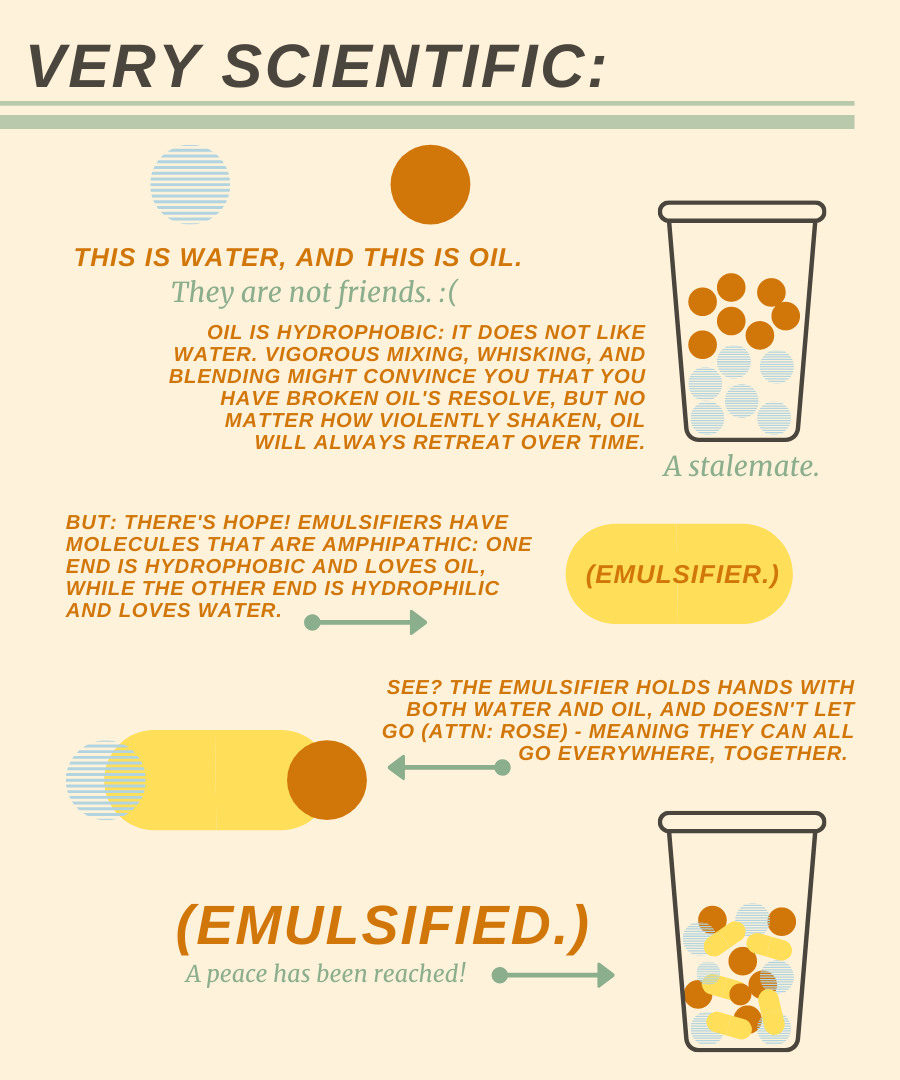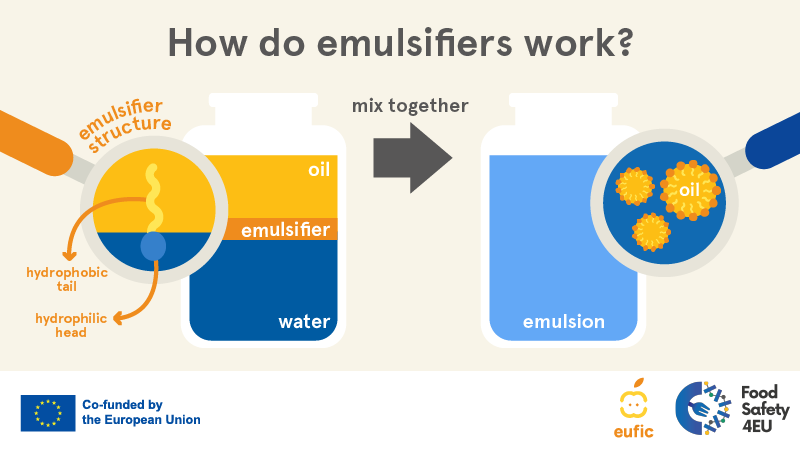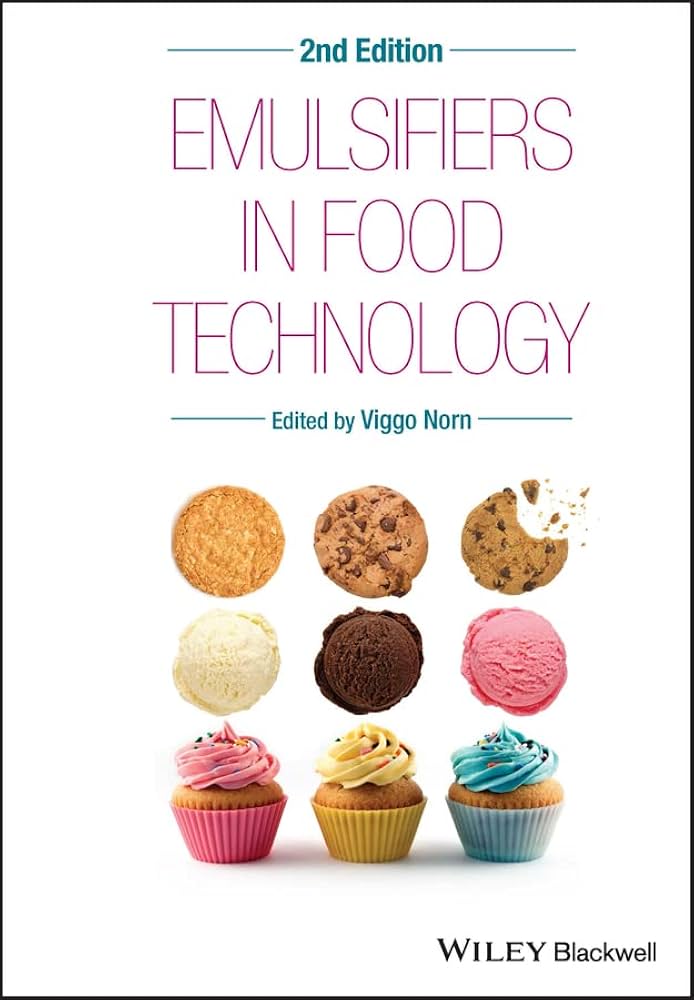Emulsifier In Food for Vegan Recipes
Discover How an Emulsifier in Food Can Assist Achieve Flawlessly Combined Recipes Each Time
Emulsifiers are vital ingredients in the culinary world, enabling the mixing of oil and water-based parts. Their ability to minimize surface tension permits the creation of secure combinations, boosting both appearance and taste in various recipes. Comprehending exactly how these materials feature can change the way one comes close to cooking. Lots of stay not aware of the various kinds of emulsifiers and their certain applications. Exploring this topic exposes important understandings for attaining cooking perfection.
What Are Emulsifiers and Exactly How Do They Work?
Emulsifiers play a vital role in the food market by allowing the stable blending of ingredients that commonly do not integrate, such as oil and water. These materials have both hydrophilic (water-attracting) and hydrophobic (water-repelling) properties, permitting them to connect with both kinds of ingredients. When an emulsifier is included to a combination, it minimizes the surface area tension in between the oil and water, helping with the development of small beads of one fluid dispersed within the other. This procedure produces a steady solution, avoiding splitting up gradually and boosting structure and mouthfeel. Emulsifiers are fundamental in various food items, from salad dressings to gelato, making certain uniformity and quality. They additionally add to the overall sensory experience of food, affecting taste launch and aesthetic allure. Recognizing exactly how emulsifiers work is essential for food researchers and cooks alike, as they strive to create satisfying and well balanced cooking experiences.
Typical Kinds of Emulsifiers Used in Cooking
Numerous sorts of emulsifiers are used in food preparation to accomplish wanted textures and stability in different food products. Usual emulsifiers include lecithin, which is naturally located in egg yolks and soybeans, and is widely made use of in mayo and dressings. An additional widespread emulsifier is mustard, which includes compounds that assist blend oil and water in sauces.
Furthermore, industrial emulsifiers such as mono- and diglycerides are usually included in processed foods to boost their stability and improve service life. Starch-based emulsifiers, stemmed from corn or potatoes, are likewise employed in sauces and desserts for enlarging and appearance. Casein, a milk protein, serves as an emulsifying representative in dairy products like cheese and lotion. Each of these emulsifiers plays a vital role in making certain that components blend perfectly, supplying the wanted consistency and flavor in cooking developments.
The Science Behind Emulsification

The security of a solution depends on the balance in between the forces acting on the spread droplets. If the droplets integrate, the emulsion can damage, resulting in splitting up. Numerous factors, such as temperature level, concentration of the emulsifier, and the method of mixing, affect the success of emulsification. Comprehending this clinical structure is necessary for attaining regular lead to culinary applications entailing emulsions.
Tips for Making Use Of Emulsifiers in Your Dishes
When incorporating emulsifiers right into recipes, mindful consideration of their homes and performance can significantly improve the end product. One should choose the ideal emulsifier based on the desired structure and security of the dish. Common options include mustard, lecithin, and egg yolks, each offering unique benefits
It's vital to recognize the temperature at which the emulsifier functions ideal; view for circumstances, check here some emulsifiers function efficiently at space temperature level, while others call for heat. Gradually adding oil to the emulsifier while blending can help create a secure solution.
Additionally, the ratio of emulsifier to fluid is essential; also little might lead to splitting up, while way too much can create an undesirable texture. Ultimately, correct storage space conditions need to be thought about, as some emulsified items may require refrigeration to maintain stability and freshness. By adhering to these ideas, cooks can achieve constantly well-blended recipes.

Delicious Recipes Featuring Emulsifiers
While several cooks might not recognize it, incorporating emulsifiers right into recipes can elevate recipes to new elevations of flavor and appearance. A traditional vinaigrette advantages significantly from the addition of mustard, which acts as an emulsifier, supplying a smooth uniformity that binds oil and vinegar effortlessly. In a similar way, homemade mayonnaise showcases the power of egg yolks, developing a creamy, elegant sauce best for sandwiches and salads.
In cooking, emulsifiers like lecithin can aid achieve a tender crumb in cakes and muffins, boosting wetness retention. An abundant delicious chocolate ganache, made with whipping cream and delicious chocolate, can likewise integrate an emulsifier to keep a silky coating. Additionally, gelato typically utilize emulsifiers to guarantee a creamy appearance and stop ice crystal formation, leading to a wonderful dessert experience. By incorporating these emulsifying representatives, cooks can produce recipes that thrill the taste buds and supply a rewarding mouthfeel.
Frequently Asked Concerns
Are Emulsifiers Safe for People With Food Allergies?
Emulsifiers can be safe for people with food allergic reactions, relying on the specific i was reading this emulsifier used. However, cross-reactivity and private sensitivities differ; subsequently, getting in touch with a medical care specialist is suggested to ensure security.
Can I Make My Very Own Emulsifier in your home?
Yes, individuals can develop homemade emulsifiers using components like egg yolks, mustard, or honey. These all-natural choices can properly blend oils and water-based parts, supplying a straightforward solution for various culinary applications.
How Do Emulsifiers Influence the Nutritional Worth of Food?
Emulsifiers can enhance the dietary worth of food by enhancing nutrient absorption and stability. However, excessive consumption may result in damaging results, potentially modifying digestion procedures and affecting intestine health and wellness in delicate people.


Are There Any Adverse Side Results of Consuming Emulsifiers?
Some studies recommend that eating emulsifiers may result in stomach concerns or interfere with intestine microbiota balance. Nevertheless, additional research study is essential to totally comprehend their long-term results on health and wellness and possible unfavorable adverse effects.
Can Emulsifiers Change the Taste of My Dishes?
Emulsifiers can discreetly modify the flavor account of dishes. By improving texture and mouthfeel, they may make flavors a lot more well balanced or noticable, however they generally do not impart solid tastes by themselves.
Emulsifiers play an essential duty in the food sector by enabling the steady mixing of components that usually do not integrate, such as oil and water. Various kinds of emulsifiers are made use of in cooking to achieve wanted structures and stability in different food products. Furthermore, business emulsifiers such as mono- and diglycerides are usually included to refined foods to boost their stability and boost rack life. It's vital to recognize the temperature level at which the emulsifier functions ideal; for circumstances, some emulsifiers work effectively at space temperature, while others call for warm (Emulsifier In Food). Emulsifiers can be risk-free for individuals with food allergies, depending on the specific emulsifier made use of